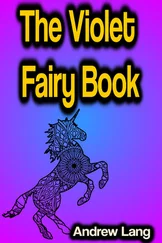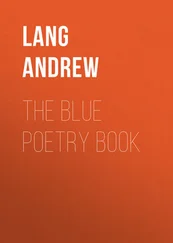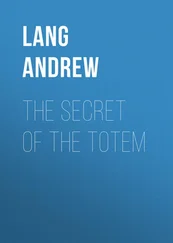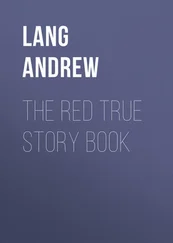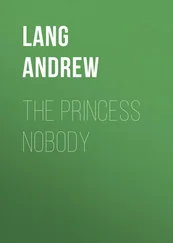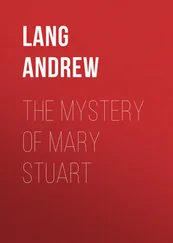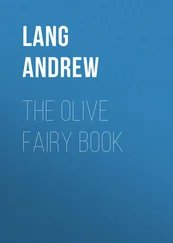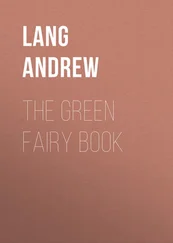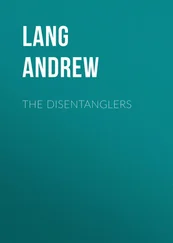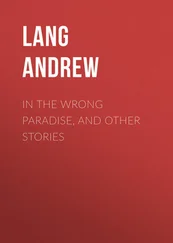Andrew Lang - The Clyde Mystery
Здесь есть возможность читать онлайн «Andrew Lang - The Clyde Mystery» — ознакомительный отрывок электронной книги совершенно бесплатно, а после прочтения отрывка купить полную версию. В некоторых случаях можно слушать аудио, скачать через торрент в формате fb2 и присутствует краткое содержание. Жанр: foreign_antique, foreign_prose, на английском языке. Описание произведения, (предисловие) а так же отзывы посетителей доступны на портале библиотеки ЛибКат.
- Название:The Clyde Mystery
- Автор:
- Жанр:
- Год:неизвестен
- ISBN:нет данных
- Рейтинг книги:4 / 5. Голосов: 1
-
Избранное:Добавить в избранное
- Отзывы:
-
Ваша оценка:
- 80
- 1
- 2
- 3
- 4
- 5
The Clyde Mystery: краткое содержание, описание и аннотация
Предлагаем к чтению аннотацию, описание, краткое содержание или предисловие (зависит от того, что написал сам автор книги «The Clyde Mystery»). Если вы не нашли необходимую информацию о книге — напишите в комментариях, мы постараемся отыскать её.
The Clyde Mystery — читать онлайн ознакомительный отрывок
Ниже представлен текст книги, разбитый по страницам. Система сохранения места последней прочитанной страницы, позволяет с удобством читать онлайн бесплатно книгу «The Clyde Mystery», без необходимости каждый раз заново искать на чём Вы остановились. Поставьте закладку, и сможете в любой момент перейти на страницу, на которой закончили чтение.
Интервал:
Закладка:
Objects of Stone. – Nine spear-heads, like arrow-points, of slate, six of which have linear patterns scratched on them. Some are perforated with round holes, and all were made by grinding and polishing. One object of slate, shaped like a knife, was made by chipping. “This knife,” says Mr. Millar, “has a feature common to all these slate weapons – they seem to have been saturated with oil or fat, as water does not adhere to them, but runs off as from a greasy surface.” Another highly ornamental piece of cannel coal is in the form of a short spear-head with a thickish stem. The stem is adorned with a series of hollows and ridges running across it; radiating lines running from the stem to the margin. Another group of these remarkable objects shows markings of the cup-and-ring order, circles, linear incisions, and perforations. Some of these ornamentations are deeply cut on the naturally rough surfaces of flat pieces of sandstone, whilst others are on smooth stones artificially prepared for the purpose. A small piece of flint was supposed to have been inserted into a partially burnt handle. There are several examples of hammer-stones of the ordinary crannog type, rubbing-stones, whetstones, as well as a large number of water-worn stones which might have been used as hand-missiles or sling-stones. These latter were not native to the hill, and must have been transported from burns in the neighbourhood. There are also two upper quern stones.
Miscellaneous Objects. – A number of splintered pieces of bone, without showing any other evidence of workmanship, have linear incisions, like those on some of the stones, which suggest some kind of cryptic writing like ogams. There are also a few water-worn shells, like those seen on a sandy beach, having round holes bored through them and sharply-cut scratches on their pearly inner surface. But on the whole the edible molluscs are but feebly represented, as only five oyster, one cockle, three limpet, and two mussel shells were found, nearly all of which bore marks of some kind of ornamentation. But perhaps the most grotesque object in the whole collection is the limpet shell with a human face sculptured on its inner surface.
“The eyes,” writes Mr. Millar, “are represented by two holes, the nose by sharply-cut lines, and the mouth by a well-drawn waved line, the curves which we call Cupid’s bow being faithfully followed. There is nothing at all of an archaic character, however, in this example of shell-carving. We found it in the interior of the fort; it was one of the early finds – nothing like it has been found since; at the same time we have no reason for assuming that this shell was placed in the fort on purpose that we might find it. The fact that it was taken out of the fort is all that we say about it.”
Mr. Millar’s opinion of these novel handicraft remains was that they were the products of a pre-Celtic civilisation. “The articles found,” he writes, “are strongly indicative of a much earlier period than post-Roman; they point to an occupation of a tribe in their Stone Age.”
“We have no knowledge of the precise position in which the ‘queer things’ of Dunbuie were found, with the exception of the limpet shell showing the carved human face which, according to a recent statement in the Journal of the British Archaeological Association , September, 1901, “was excavated from a crevice in the living rock, over which tons of debris had rested. When taken out, the incrustations of dirt prevented any carving from being seen; it was only after being dried and cleaned that the ‘face’ appeared, as well as the suspension holes on each side.”
So, this unique piece of art was in the fort before it became a ruin and otherwise presented evidence of great antiquity; but yet it is stated in Mr. Millar’s report that there was “nothing at all of an archaic character in this example of shell-carving.” 20 20 See pages 133, 166.
I have nothing to do with statements made in The Journal of the British Archaeological Association about “ a carved oyster shell .” I stick to the limpet shell of Mr. Millar, which, to my eyes looks anything but archaic.
V – HOW I CAME INTO THE CONTROVERSY
Thus far, I was so much to be sympathised with as never to have heard of the names of Dunbuie and of Mr. Donnelly. In this ignorance I remained till late in October or early in November 1898. On an afternoon of that date I was reading the proof sheets, kindly lent to me by Messrs. Macmillan, of The Native Tribes of Central Australia by Messrs. Spencer and Gillen, a work, now justly celebrated, which was published early in 1899. I was much interested on finding, in this book, that certain tribes of Central Australia, – the Arunta “nation” and the Kaitish, — paint on sacred and other rocks the very same sorts of archaic designs as Mr. Donnelly found incised at Auchentorlie (of which I had not then heard). These designs are familiar in many other parts of Scotland and of the world. They play a great part in the initiations and magic of Central Australia. Designs of the same class are incised, by the same Australian tribes, on stones of various shapes and sizes, usually portable, and variously shaped which are styled churinga nanja . ( Churinga merely means anything “sacred,” that is, with a superstitious sense attached to it). They also occur on wooden slats, ( churinga irula ,) commonly styled “Bull roarers” by Europeans. The tribes are now in a “siderolithic” stage, using steel when they can get it, stone when they cannot. If ever they come to abandon stone implements, while retaining their magic or religion, they will keep on using their stone churinga nanja .
While I was studying these novel Australian facts, in the autumn of 1898, a friend, a distinguished member of Clan Diarmaid, passing by my window, in London, saw me, and came in. He at once began to tell me that, in the estuary of the Clyde, and at Dunbuie, some one had found small stones, marked with the same archaic kinds of patterns, “cup-and-ring,” half circles, and so forth, as exist on our inscribed rocks, cists, and other large objects. I then showed him the illustrations of portable stones in Australia, with archaic patterns, not then published, but figured in the proof sheets of Messrs. Spencer and Gillen’s work. My friend told me, later, that he had seen small stone incised with concentric circles, found in the excavation of a hill fort near Tarbert, in Kintyre. He made a sketch of this object, from memory: if found in Central Australia it would have been reckoned a churinga nanja .
I was naturally much interested in my friend’s account of objects found in the Clyde estuary, which, as far as his description went , resembled in being archaically decorated the churinga nanja discovered by Messrs. Spencer and Gillen in Central Australia. I wrote an article on the subject of the archaic decorative designs, as found all over the world, for the Contemporary Review . 21 21 March 1899, “Cup and Ring”; cf. the same article in my Magic and Religion , 1901, pp. 241-256.
I had then seen only pen and ink sketches of the objects, sent to me by Mr. Donnelly, and a few casts, which I passed on to an eminent authority. One of the casts showed a round stone with concentric circles. I know not what became of the original or of the casts.
While correcting proofs of this article, I read in the Glasgow Herald (January 7, 1899) a letter by Dr. Munro, impugning the authenticity of one set of finds by Mr. Donnelly, in a pile-structure at Dumbuck, on the Clyde, near Dumbarton. I wrote to the Glasgow Herald , adducing the Australian churinga nanja as parallel to Mr. Donnelly’s inscribed stones, and thus my share in the controversy began. What Dr. Munro and I then wrote may be passed over in this place.
Читать дальшеИнтервал:
Закладка:
Похожие книги на «The Clyde Mystery»
Представляем Вашему вниманию похожие книги на «The Clyde Mystery» списком для выбора. Мы отобрали схожую по названию и смыслу литературу в надежде предоставить читателям больше вариантов отыскать новые, интересные, ещё непрочитанные произведения.
Обсуждение, отзывы о книге «The Clyde Mystery» и просто собственные мнения читателей. Оставьте ваши комментарии, напишите, что Вы думаете о произведении, его смысле или главных героях. Укажите что конкретно понравилось, а что нет, и почему Вы так считаете.

